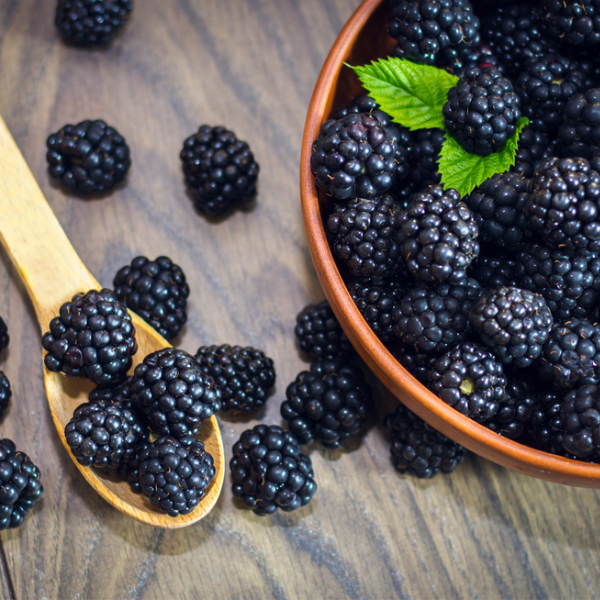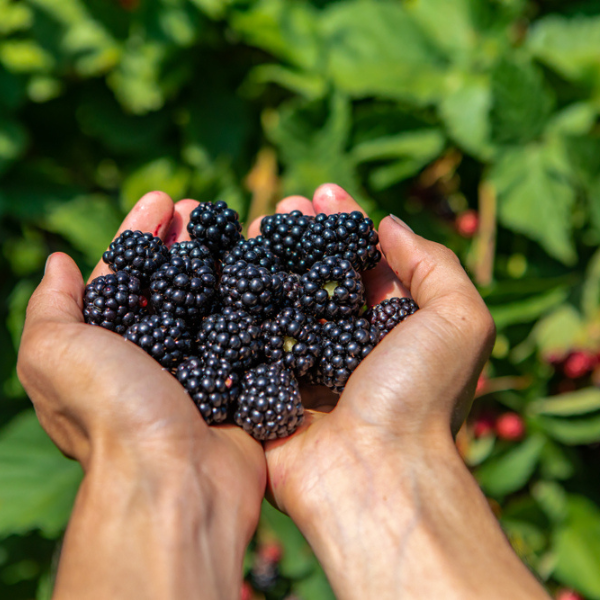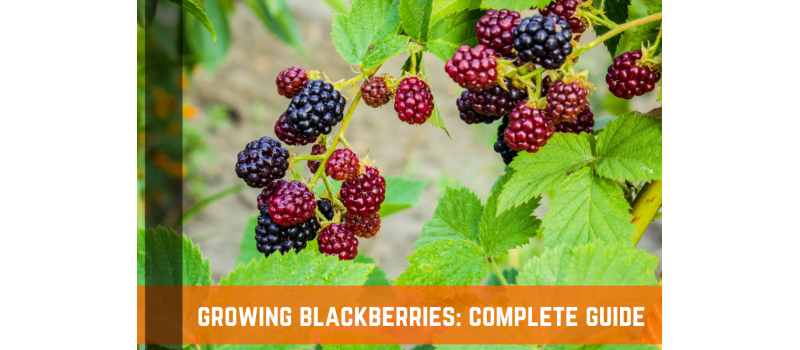The Rosaceae family is home to a wide variety of delicious plants, including blackberries, raspberry bushes, roses, apple trees, and blackberries themselves. Blackberries, which are closely related to raspberries, are classified as brambles because they typically have thorns, have a thick and tangled growth, and can either stand erect or sprawl.
Blackberries are a type of perennial plant that produce fruit on canes that live for only two years. Floricane fruiting plants are characterized by the presence of fresh green stems known as primocanes each year. Floricane fruiting plants do not normally produce flowers on these primocanes; instead, they produce leaves. It is no wonder why anyone would want to add these bushes to their own gardens at home.
Optimal Growing Conditions For Blackberries
Blackberries are a familiar sight in many parts of the United States, where they are either consumed fresh or employed in the preparation of baked foods or preserves. Those that harvest the wild rambling berries do so with the understanding that the prickly vines are going to cause some damage when they are harvesting the delicate fruit because they are armed with this prior information.
The good news is that cultivating blackberry bushes in a home garden does not have to be a lesson in pain, as new thornless cultivars are now available. This is because blackberry plants produce blackberries. Blackberries are most successful in environments where the days are warm but the nights are cool. They might have an upright, semi-erect, or trailing habit, depending on the species.
The thorny canes of the erect kind of berry, which grows upright and does not require support, are present in this variety of berry. They are able to produce huge, tasty berries and are more resistant to the harsh conditions of winter than their contemporaries.

How To Grow Blackberries
Due to the fact that blackberries come from the Rosaceae family, their cultivation is very similar to that of rose bushes. To our good fortune, the ease of care required for blackberries is more comparable to that of wild roses than it is to that of a hybrid tea rose.
Blackberries are able to grow in a wide variety of environments, but the harvest from a blackberry plant that is struggling will not be as abundant as the harvest from a blackberry plant that has been pampered. Plants will receive the vitality and nutrition they require in order to produce large, sweet blackberries if they are provided with an abundance of sunshine, consistent irrigation, and rich, loamy soil.
Plants should have a distance between them of 5 and 6 feet, and if they are to be planted in rows, the rows should have a distance between them of 5 and 8 feet. Before planting, the soil should be amended, if necessary, so that it is rich, has good drainage, and is somewhat acidic.
Planting depth for blackberries should be kept to a minimum and should be no more than one inch deeper than where they were growing in the nursery container. Canes of trailing blackberry kinds need some kind of support, such a trellis or anything else, in order to grow successfully.
Blackberry Care & Maintenance
Light
Locations that receive full sunlight are ideal for growing fruitful blackberry plants. It is OK to have some afternoon shade, particularly in regions that have particularly warm summers.
Soil
Blackberries may normally be expected to live for around ten years if they are properly cared for, thus selecting the right location for them is essential to their longevity. These bushes are unable to thrive in clay soil, which should have a slightly acidic pH and good drainage if you want them to thrive.
Not only will an elevated site or raised beds aid with drainage, but they will also protect flower buds from being harmed by late-spring frosts. As a result of their shallow root systems, blackberries are subject to the effects of competition from other plants that could steal nutrients or water from them.
Always ensure that there is a thick layer of mulch covering the area around the roots. This will not only provide the plants with nutrients, but it will also help to prevent water loss and weed growth.

Water
Blackberries require only a moderate amount of water, approximately 1 inch per week, which can come from either ground-level irrigation or from natural rainfall. Wet soils are not ideal growing conditions for blackberries.
Temperature and Humidity
To germinate, blackberries need to experience a period of cold dormancy; yet, due to the fact that they have such shallow roots, they do not fare well in regions where the temperature consistently drops below zero degrees. Blackberries thrive in climates ranging from zone 5 all the way up to zone 8.
The combination of low temperatures over the winter and damp soil in the spring can be fatal to plants. The opposing climate of hot, dry breezes is also adverse for blackberry growth and may produce in fruits that are stunted and seedy. This is because blackberries prefer cooler, wetter conditions.
Harvesting Blackberries
It's crucial to monitor the progress of your blackberries because they are quite perishable. Blackberries that are still in their immature stages begin green, change to crimson, and finally reach a rich, glossy black. Pick the blackberries only after they have gotten all black because blackberries do not continue to mature after being harvested. After being harvested, berries keep in the refrigerator for roughly seven days.
Common Pests & Diseases
Anthracnose, stem blight, and crown gall affect blackberries. Buy disease-free plant stock from reputed nurseries and grow blackberries away from wild brambles. Stinkbugs and raspberry crown borers are pests. Healthy, strong plants attract fewer insects. Viruses can infect blackberries. Raspberry dwarf virus and blackberry calico virus generate leaf spots. Remove and destroy affected plants.

